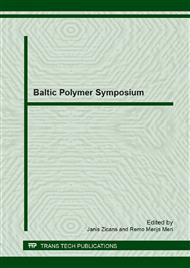p.25
p.31
p.37
p.43
p.49
p.57
p.63
p.69
p.75
Electrochemical Properties of Advanced Anodes for Lithium-Ion Batteries Based on Carboxymethylcellulose as Binder
Abstract:
Electrochemical properties and possibilities of manufacturing the anodes based on water-soluble binders such as carboxymethylcellulose (CMC) have been investigated in order to create prerequisites for development of “green” technologies for recyclability of LIBs components. In this work an advanced anode was designed. A kind of nanosized carbon coated Si composite was synthesized. The charge/discharge test reveals that the advanced anode shows a reversible capacity of 600 mAh/g. The improved performance was ascribed to the carbon shell of Si and CMC binder. The binder CMC buffers the expansion of the Si and the improved electric contact between the active material and copper current collector.
Info:
Periodical:
Pages:
49-55
Citation:
Online since:
June 2013
Authors:
Keywords:
Price:
Сopyright:
© 2013 Trans Tech Publications Ltd. All Rights Reserved
Share:
Citation:


